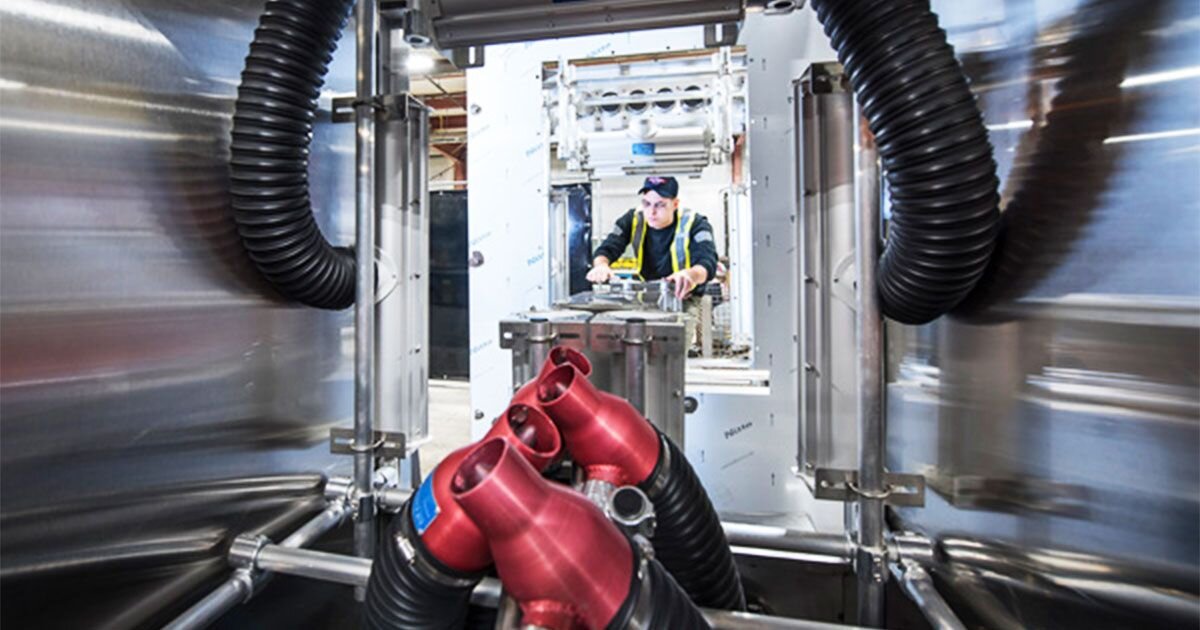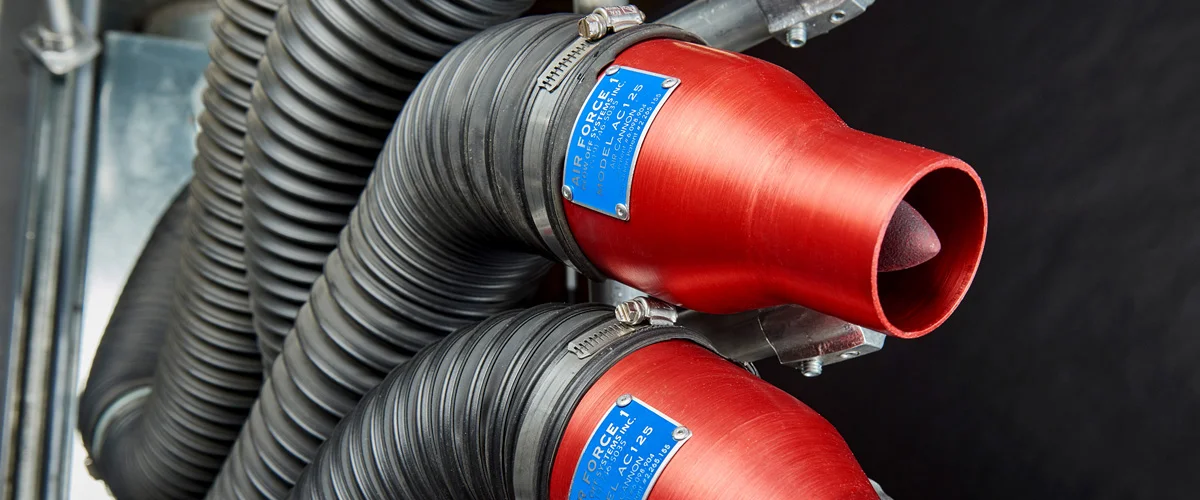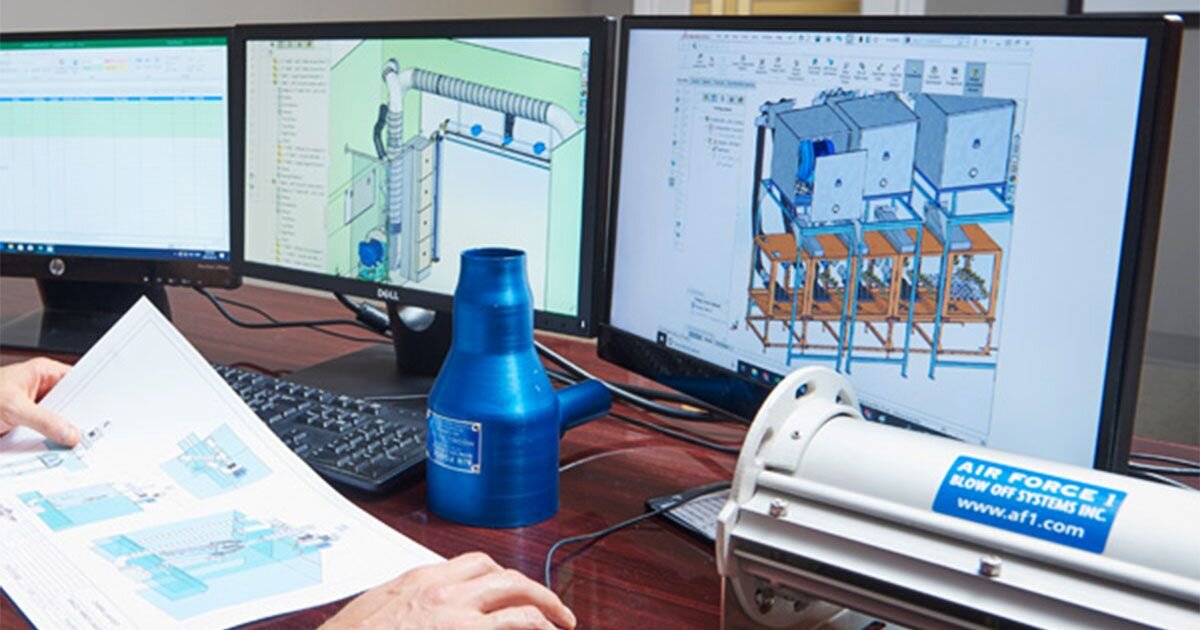
That quality issue that won't go away? Those unexpected jumps in your energy bills? The slowdowns that keep happening in your production? There's a likely cause you've been overlooking – your blow off system.
Most factory engineers know their machines well, but many pay less attention to how air moves in their plants. Airflow in blow off applications brings together physics and practical engineering, yet few people give it the attention it deserves.
A poorly designed blow off system doesn't just waste air – it works against what you're trying to do. When high-pressure air hits a surface without proper direction, it often just moves dirt from one spot to another instead of removing it. At the same time, your compressors work overtime, using extra electricity to make up for an inefficient system – driving up costs and reducing compressed air efficiency.
Successful manufacturers recognize the value of optimizing existing systems. Focusing on the fundamentals of air management can lead to targeted improvements that boost efficiency without necessarily requiring major capital investments. The results often include significant energy savings, improved product quality, and increased throughput.
Laminar vs. Turbulent Flow: What's the Difference?
When setting up a blow off system, you need to choose: Do you want smooth, even airflow (laminar) or powerful, mixing airflow (turbulent)? This choice matters for drying, cleaning, or cooling your products.
Laminar Flow: For Precision Work
Think about pouring honey slowly from a spoon – it flows in one smooth stream. That's how laminar airflow works. The air moves in straight lines without much mixing.
Laminar flow works best when you need:
Gentle treatment for delicate products like electronics
Even drying with no streaks on flat surfaces
Precise control of light dust or particles
The same results every time across many products
Turbulent Flow: For Tough Cleaning Jobs
Now picture stirring honey quickly – creating swirls and mixing patterns. That's turbulent flow, where air moves in random directions and mixes a lot.
Turbulent flow is better when you need to:
Remove stubborn dirt and residue
Clean odd-shaped items with corners and recesses
Cool items faster
Move heavier dirt and particles
Hardware Options: Nozzles and Air Knives
To use airflow in blow off applications effectively, partnering with providers of high-quality equipment, such as specialized nozzles and air knives, is essential.

Beyond Basic Nozzles: Features That Matter
Basic nozzles don't cut it anymore. Today's engineered nozzles work much better. Here's what makes good nozzles different:
Amplification ratio - Good nozzles pull in extra air from around them, giving you up to 25 times more output
Material choice - Stainless steel works for food plants, while special plastics resist chemicals
Internal shape - How air flows inside affect how well the nozzle works
Proper mounting - Even great nozzles fail if they're not positioned correctly
Many factories unknowingly waste air and energy by using high-pressure nozzles. Open blow off systems can consume up to 30% of a facility’s total energy, making air knives & engineered nozzles critical for efficiency.
Air Knife Tips: Solving Common Problems
Air knives make sheets of air for cleaning conveyor belts, flat materials, and large surfaces.
From hundreds of air knife installations, here's what works best:
Air chamber design beats high pressure - Well-designed chambers that spread air evenly work better than just turning up the pressure
Keep the gap even - Small changes in the opening size cause big problems
Position matters - Each job needs specific distance and angle settings
Clean, dry air works best - Using filters and sometimes air dryers prevent many problems
Common Mistakes in Blow Off Applications and How to Fix Them
Recognizing these common errors can significantly improve your airflow system performance:
Mistake #1: Relying Only on Pressure
Problem: When drying results are poor, many operators simply increase air pressure. This wastes energy without fixing the real issue.
Fix: Focus on proper airflow and direction instead of just pressure. Systems with lower pressure but better air delivery clean more effectively while using less energy.
Mistake #2: Using Generic Nozzle Layouts
Problem: Standard nozzle arrangements that don't match your specific products create uneven results and waste air.
Fix: Study your product's shape before designing your system. Placing nozzles to target specific areas works better and uses less compressed air.
Mistake #3: Ignoring Air Quality
Problem: Even well-designed systems perform poorly when air contains moisture, oil, or particles.
Fix: Install proper filters and air dryers. Clean air improves system effectiveness, prevents product contamination, and extends equipment life.
Mistake #4: Overlooking Factory Conditions
Problem: Surrounding temperature, humidity, and nearby equipment affect how well your blow off system works.
Fix: Consider your workspace when planning your system. Areas with high humidity need additional treatment, while spaces with natural airflow may
require protective barriers.
Mistake #5: Insufficient Operator Training
Problem: Good systems often fail when operators make improper adjustments or don't follow procedures.
Fix: Develop clear instructions and train your team thoroughly. Document the optimal settings and explain why they shouldn't be changed without proper assessment.
Making It Work in Your Factory
Moving from ideas to action requires a practical approach. Here's how to set up successful airflow blow off systems in your plant:
1. Start with a Good Assessment
Before changing anything, measure these key factors:
Current performance - How well does your cleaning/drying work now?
Air consumption - Measure actual SCFM usage, not just pressure settings
Process requirements - Identify what your minimum performance needs are
Energy costs - Figure out what compressed air costs you per SCFM
These numbers show where you're starting from and help you track improvements.
2. Design for Your Specific Needs
Good airflow systems must be matched to your exact situation:
Product characteristics - Size, shape, material, and sensitivity
Factory environment - Temperature, humidity, and nearby processes
Line configuration - Speed, direction, and space constraints
Contaminant properties - Particle size, how they stick, what they're made of
One-size-fits-all solutions rarely work well. Many plants waste money on generic systems that don't solve their specific problems.

3. Test Before Going All In
Unless your needs are very simple, testing on a small scale helps a lot:
Start with just one station or line
Collect performance data during actual production
Make adjustments based on what you learn
Document improvements before expanding
This approach reduces risk and often reveals opportunities for improvement that weren't obvious at first.
Energy Efficiency Benefits
Good airflow in blow off applications helps you save money in two ways: lower energy use and less maintenance, ensuring greater compressed air efficiency.
Reducing Power Use
Good airflow in blow off applications helps you save money in two ways: lower energy use and less maintenance. Both directly affect your operating costs.
Lowering Maintenance Needs
Maintenance costs often get overlooked when planning blow off systems. Manufacturers find that their maintenance schedule changes dramatically, from having to replace wiper pads daily to just quarterly inspections and annual filter changes.
When calculating potential savings, be sure to consider:
Reduced power consumption
Fewer replacement parts
Less labor time spent on maintenance
Less production downtime
Fewer quality problems that need fixing
Many manufacturers find their airflow improvements pay for themselves within 6-12 months through energy savings alone.
What's Coming Next in Airflow Technology
The field of airflow in blow off applications keeps advancing. Here are trends shaping the future:
New Technologies to Watch
Digital monitoring - Real-time data on performance and efficiency
Smart control systems - Automatically adjusting airflow based on product type or line speed
Energy recovery - Capturing and reusing energy that would otherwise be wasted
Combined technologies - Mixing compressed air with other methods like ionization
Computer simulation - Using advanced software to design systems before installation
Early adopters of these technologies are gaining significant advantages in performance, compressed air efficiency, and sustainability – key factors for energy-efficient blow off systems.
Why Optimized Airflow Matters to Your Bottom Line
Understanding airflow in blow off applications isn't just a technical topic – it's a business opportunity. Well-designed systems deliver multiple benefits that directly impact your profitability:
Lower energy costs through more efficient compressed air usage
Better product quality and consistency
Faster production without buying additional equipment
Reduced environmental impact
Lower maintenance costs and longer equipment life
These benefits add up over time, often delivering returns far beyond the initial investment.
Ready to improve your production efficiency? Contact our team today for an airflow assessment and discover solutions tailored to your specific manufacturing challenges.

